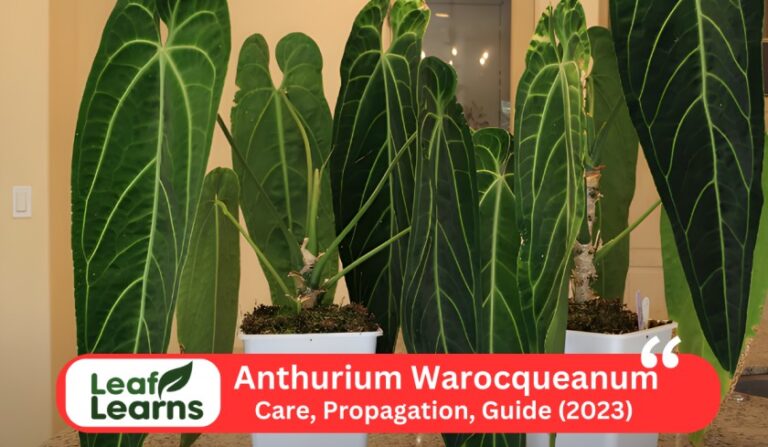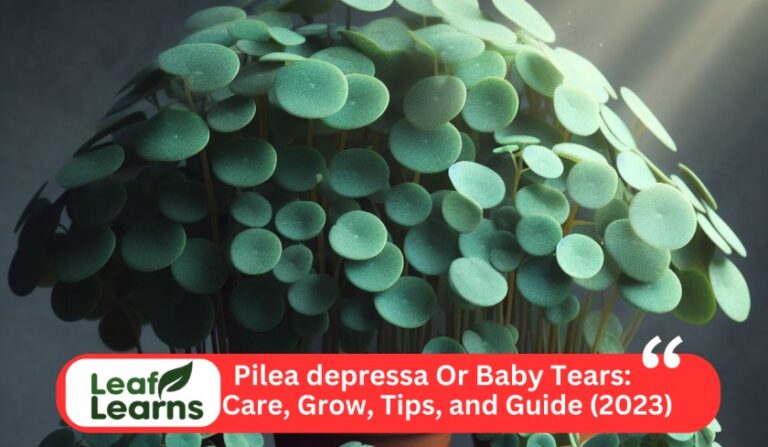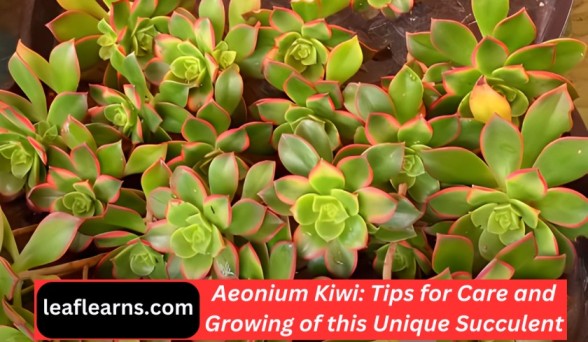Care and Grow for Philodendron Billietiae: Tips and Guide (2023)
Philodendron billietiae commonly called Billie and Philidor It is a Good and beautiful houseplant and this plant belongs to Araceae family. The genus is Philodendron. It is mostly present to specific regions like tropical rain forests and used for indoor blushing. This plant show a vining or climbing growth habit, And its mature size goes up to 36 inches in heights.

Some features of this plant make its beautiful for indoor spaces like dark green, glossy heart-shaped leaves and Height of 3-5 feet and width of 7-10 inches. Within the summar and spring season its blooms and produce eye catching orange yellow petioles.
To place this plant philodendron billietiae to bright indirect sunlight, and give the water it when the top inch of soil is dry and need water, And this plant needs quick draining loamy soil. This plant require a temperature between 65 to 80ºF (18 to 27ºC) and need humidity levels of 70 to 90%.
Regular watering and soil temperature in the exact time makes the plant more beautiful for your indoor spaces.It is toxic to both pets and human.
| Feature | Description |
| Scientific Name | Philodendron-billietiae |
| Common Names | Billie and Philidor, Billie |
| Family | Araceae |
| Genus | Philodendron |
| Origin | Native to specific regions (e.g., tropical rainforests) |
| Growth Habit | Vining or climbing |
| Mature Size | 36 inches as a houseplant |
| Foliage | Dark green, glossy leaves |
| Leaf Shape | Heart shape |
| Leaf Size | 3-5 feet in height and 7-10 inches wider |
| Flower | Orange-yellow petioles and wavy, ridged leaf edges |
| Bloom Time | Spring, summer |
| Light Requirements | Bright indirect sunlight |
| Watering Needs | Water if the top inch of soil is dry |
| Soil Type | Rich, quick-draining, loamy |
| Temperature Range | 65 to 80ºF (18 to 27ºC) |
| Humidity Requirements | 70 to 90% |
| Fertilization | A balanced feed once a month in spring and summer |
| Pruning | To remove dead leaves |
| Pests and Diseases | Aphids or mealybugs |
| Toxicity | Toxic to pets |
| Propagation Methods | Root in water or soil, or air layer |
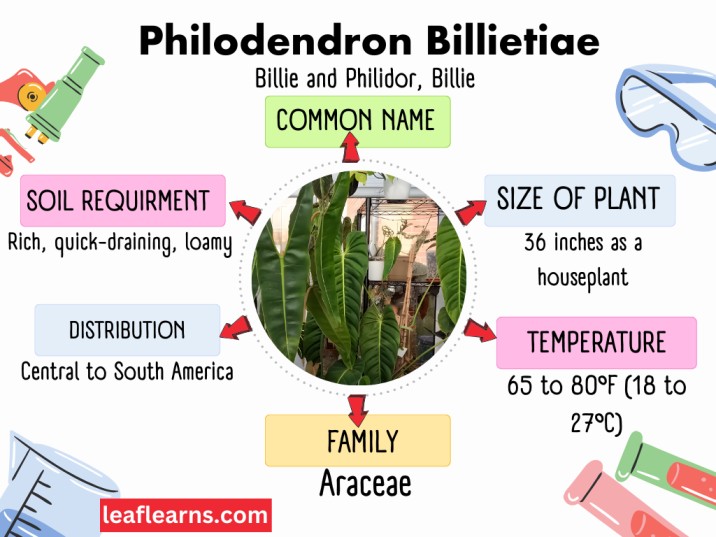
Contents
- 1 Top Care Tips
- 2 Care for Philodendron billietiae
- 3 Pruning
- 4 Growth Rate and Size
- 5 Propagating Philodendron Billietiae
- 6 How to Grow From Seed
- 7 Repotting
- 8 Flowering and Foliage
- 9 Overwintering
- 10 Common Pests
- 11 Plant Diseases
- 12 How to Get to Bloom
- 13 Problems and Solutions
- 14 Toxicity
- 15 Appearance
- 16 Suggested Uses
- 17 Philodendron Billietiae Care and info
- 18 Variants and Hybrids
- 19 Conclusion
- 20 FAQs
Top Care Tips
Put your Philodendron-Billietiae in direct, bright light. Avoid direct sunlight since it might burn its leaves.
Watering: Maintain an equal layer of damp but not waterlogged soil. Water about once every two weeks or when the top inch of soil feels dry to the touch.
Maintain a high amount of humidity surrounding your plant. This may be accomplished by utilizing a humidity tray or routinely spraying the foliage.
During the growing season (spring and summer), fertilize your plant once a month with a balanced liquid fertilizer.
Pruning: Remove any dead or discolored leaves from your plant by pruning. This promotes healthy development and maintains its finest appearance.
Care for Philodendron billietiae
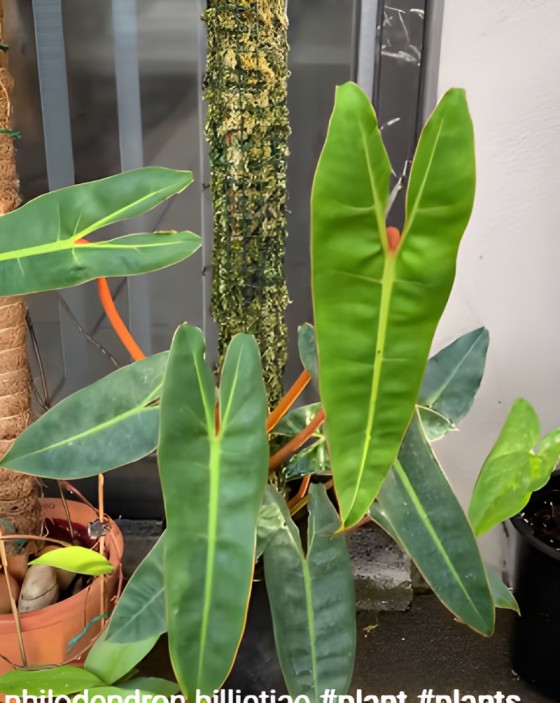
Light Requirement
It’s crucial to find the ideal light for your Philodendron-Billietiae in order to care for it. This plant would be best placed close to a window where it would receive enough of light but not direct sunbeams as it enjoys bright, indirect sunshine.
Avoid direct sunlight since it might damage the foliage. Your plant will remain content and flourish if you can find the ideal area of soft, filtered light. Just make sure you give it the correct quantity of sunlight, don’t forget!
Water Requirement
It’s easy to water your Philodendron-billietiae! Maintain a constant moisture level in the soil that is not wet. Before watering, wait until the top inch of the soil feels dry to the touch, which often means watering once every two to three weeks.
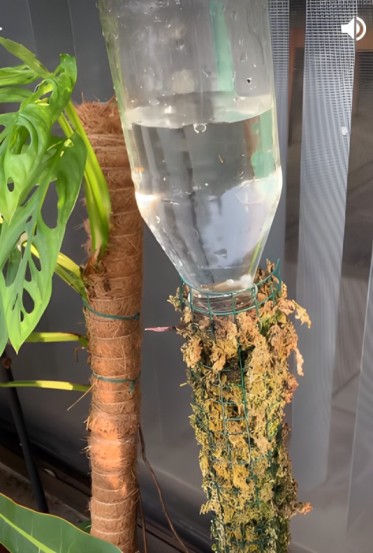
This maintains your plant healthy and helps avoid root rot. Overwatering may be damaging, so make sure your pot has sufficient drainage and keep it out of standing water.
Depending on the season and the humidity levels in your home, adjust your watering routine.
Soil Requirement
Pay particular attention to the demands of your Philodendron-billietiae’s soil when taking care of it. This plant loves loamy, rich, well-draining soil. Make sure the potting mix you select makes it simple for extra water to drain away to avoid root rot.
For optimal moisture retention and drainage, use a mixture with organic materials. Maintain a constant moisture level in the soil that is not wet.
Temperature Requirement
Keep in mind the Philodendron-billietiae’s preferred temperature when taking care of it. The ideal temperature range for this tropical plant is between 65 and 80 degrees Fahrenheit (18 and 27 degrees Celsius).
Avoid subjecting it to harsh temperatures or draughts since they might stress the plant.
Your this plant will grow and maintain its colourful appearance if you keep it in this temperature range, giving it a great addition to your interior environment.
Humidity Requirement
It’s crucial to think about the Philodendron-billietiae’s temperature and humidity requirements when taking care of it. To keep your plant comfortable, Maintain a humid climate with levels between 70 and 90% as well.
This plant prefers a tropical environment, thus regular misting or the use of a humidity tray might be beneficial.
Fertilizer Requirement
To properly care for your Philodendron-billietiae, you must adhere to its fertilizer needs. Regular feeding is beneficial to this plant, especially in the spring and summer when it is actively growing.
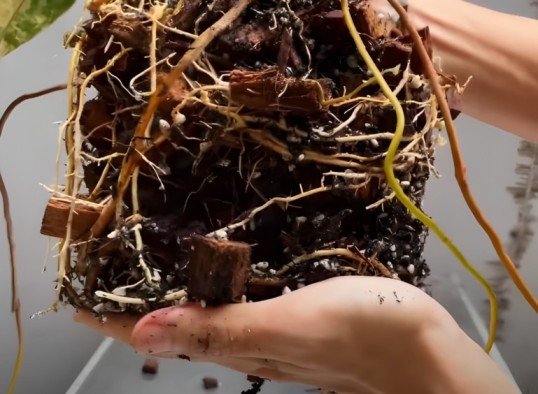
Apply a balanced liquid fertiliser roughly once a month, diluted in accordance with the product’s directions.
This aids in supplying the essential nutrients for thick, colourful leaves. Keep in mind that excessive fertilisation might hurt your plant.
Potting Requirement
Make sure the pot has sufficient drainage if you want your Philodendron-Billietiae to stay healthy. Use a potting mix that drains properly to stop root rot.
This will enable extra water to evaporate. Every two to three years, or when the plant outgrows its present pot, repot the plant. When repotting, gently loosen the roots and set the plant in a little bigger container.
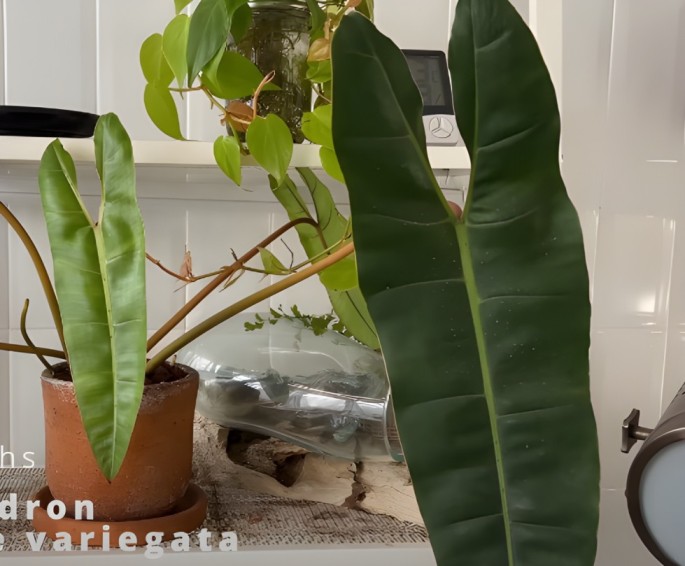
Pruning
Giving your Philodendron-Billietiae a trim is similar to pruning it. It’s crucial since it maintains the nice and healthy appearance of your plant.
With clean pruning shears or scissors, simply remove any dead or yellowing leaves.
This aids in your plant’s concentration on developing fresh, colourful leaves. In addition to preventing crowding and ensuring proper air circulation, regular trimming lowers the danger of pests and diseases.
Growth Rate and Size
The moderate growth rate of Philodendron-Billietiae means that it won’t develop at a snail’s pace or shoot up like a rocket. When cultivated as a houseplant, it normally matures to a height of around 36 inches.
The glossy, heart-shaped leaves can reach heights of 3 to 5 feet and widths of 7 to 10 inches. Therefore, it’s the ideal size for indoor gardening because it doesn’t completely fill your room.
Just keep in mind that while it can take some time to develop to its full capacity, the rich, colourful leaves will be worth the wait.
Propagating Philodendron Billietiae
Rooting Stem Cuttings
- Take a cutting from a healthy stem that has at least one leaf and a node, which is a little bump where roots and leaves grow.
- Put the cutting in a cup of damp soil or a glass of water.
- Maintain it in direct, strong light.
- If you’re growing your plants in water, change the water frequently, or make sure the soil is always moist.
- After a few weeks, roots will start to appear. You may transplant the cutting into a larger pot with well-draining soil after the roots are a few inches long.
Air Layering
- The healthy part of the stem where you wish to grow a new plant should be chosen.
- Make a little cut or scrape away a piece of bark from the stem that is approximately 1 inch long.
- To the exposed area, apply a rooting hormone (optional).
- The incised area should be covered with plastic wrap after being wrapped in damp peat moss or sphagnum moss.
- To keep the plastic wrap in place, knot it with twine or a twist tie.
- Over the course of many weeks, moss roots will form. Once there are sufficient roots, remove the stem below the rooted portion and plant it in a separate pot with well-draining soil.
Water Propagation
- As said earlier, cut a healthy stem.
- The cutting should be placed in a container with just enough water to cover the leaf node while leaving the rest of the cutting above the surface.
- To avoid the formation of germs and mould, change the water every one to two weeks.
- You need to observe roots forming in the water after a few weeks.
- You may transfer the cutting into soil after the roots are around 2-3 inches long.
How to Grow From Seed
First, get seeds by taking them from a mature Philodendron-Billietiae plant.
Use well-draining potting soil while preparing the soil. Put it in a seed tray or several little pots.
To plant seeds, scatter them on the soil’s surface and gently push them down. Avoid burying them too far.
Maintain Moistness: Ensure that the soil is continually wet but not soggy.
Maintain a warm, well-lit area, but stay out of the direct sun.
Repotting
Giving your Philodendron-Billietiae a new home by repotting it. It’s time to transfer it to a little bigger pot when its present one gets too cramped or crowded.
This is how: Shake off any extra soil and carefully transfer the plant to the new container filled with new, well-draining soil. The new pot must have drainage holes, so check.
Repotting encourages faster growth and keeps your plant from feeling crowded. Your Philodendron Billietiae will appreciate you with lush growth if you repeat this every two to three years.
Flowering and Foliage
The Philodendron-Billietiae is renowned for its thick, heart-shaped, glossy, and brilliant green leaves. Even while it doesn’t have particularly beautiful blooms, it does have unusual orange-yellow petioles and wavy, ridged leaf margins that provide it some aesthetic appeal.
It is a popular choice for folks who want lush, beautiful houseplants because of its magnificent leaves. All year long, its alluring leaves will be yours to appreciate if you keep it in direct, strong light.
Overwintering
Taking care of Philodendron-Billietiae throughout the winter involves winter maintenance. Keep it indoors, away from icy draughts and frost. Reduce irrigation and let the soil dry out more between applications.
Additionally, give it a little less light than in the summer, but don’t completely darken the area. Pests and illnesses should be avoided since they might spread indoors.
Your plant will survive the winter and thrive when spring arrives if you overwinter it.
Common Pests
Pests like mealybugs and aphids can cause problems for your Philodendron billietiae. By draining the sap from your plant and weakening it, these tiny creatures can cause damage.
Check your plant leaves and stems often for any indications of these pests, such as sticky buildup or small insects.
To get rid of them if you find any, carefully wipe them off with soapy water or insecticidal soap. This promotes the health and growth of your plant.
Plant Diseases
Like other plants, Philodendron-Billietiae is susceptible to diseases. Leaf spots, root rot, and fungal infections are typical problems. Maintain appropriate watering (not too much or too little) and excellent air circulation to avoid problems.
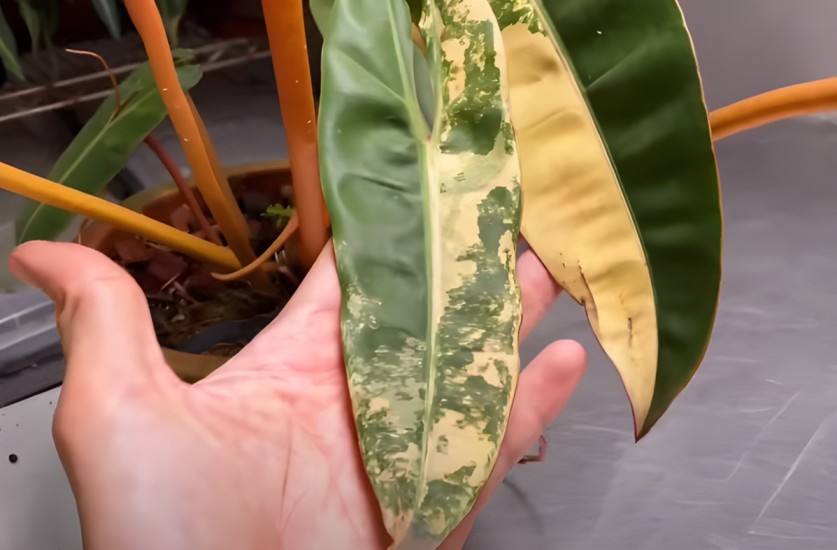
Keep the leaves dry and swiftly remove any damaged ones. To maintain your Philodendron-Billietiae healthy and flourishing, routinely check your plant for warning indications of danger, such yellowing leaves, and take early corrective action.
How to Get to Bloom
Since this plant is primarily cultivated for its exquisite leaves, getting it to blossom can be difficult. But if you want it to blossom, give it some extra humidity, regular watering, and bright, indirect sunshine.
Feed it once a month with a balanced fertiliser throughout the warmer months. Remember that although flowering may not occur frequently, the luxuriant foliage is what is important in this case.
Problems and Solutions
Problem: Yellowing Leaves
Solution: If the leaves on your Philodendron plant are becoming yellow, it may have received too much water. Between waterings, let the soil somewhat dry out and make sure there is excellent drainage.
Problem: Leggy Growth
Solution:Provide your plant with more indirect sunlight if it is becoming too tall and sparse, and cut back any lanky stems to promote bushier growth.
Problem: Brown Tips on Leaves
Solution: Low humidity is typically indicated by brown leaf tips. Use a humidity dish or spritz the plant to increase humidity.
Problem: Pests (Aphids or Mealybugs)
Solution: Neem oil or insecticidal soap can be used to manage pests after physically removing them with a moist cloth or cotton swab.
Problem: No New Growth
Solution:Your Philodendron could require extra fertilisers if it isn’t growing. During the spring and summer growing seasons, fertilise it with a balanced fertiliser to promote new growth.
Toxicity
If consumed, the Philodendron-Billietiae can be poisonous to both people and animals. It contains ingredients that might make you feel queasy in the stomach, slobber a lot, and irritate your mouth and throat.
This plant must be kept out of the reach of curious animals and kids.
If you accidentally eat something, call a doctor or a veterinarian right away for advice. Always wash your hands after handling a plant to prevent any chance of irritation or ingesting.
Appearance
This plant has lovely glossy dark green heart-shaped leaves. These leaves have the potential to get quite enormous, growing to be 3-5 feet tall and 7–10 inches broad.
During the plant’s spring and summer flowering period, unique orange-yellow petioles and wavy, ridged leaf margins are also present.
Suggested Uses
- Indoor Decor: Its rich, glossy foliage are perfect for illuminating your environment.
- Hanging Baskets: Ideal for adding foliage to macramé plant hangers or hanging baskets.
- Office Spaces: Excellent for enhancing air quality and establishing a relaxing environment in offices.
- Trellises: Use as a climbing plant to create vertical appeal on stakes or trellises.
- Green Gifts: Because it requires little upkeep, it is a considerate gift for gardeners.
Philodendron Billietiae Care and info
When it comes to taking care of your Philodendron-Billietiae, there are a few essential care tips you should keep in mind. First, let’s talk about the soil mix. These plants thrive in a well-draining soil mix that includes ingredients like peat moss, perlite, and orchid bark.
It’s essential to ensure that the soil doesn’t become waterlogged, as they prefer slightly moist but not soggy conditions. Allow the top inch or so of soil to dry out before watering again to prevent overwatering, which can lead to root rot.
Variants and Hybrids
In terms of light requirements, Philodendron-Billietiae prefers bright, indirect light. Avoid exposing them to direct sunlight, as it can scorch their leaves. As for growth rate, these plants are relatively slow growers, so don’t expect rapid changes.
Patience is key! Lastly, if you’re interested in propagating your Philodendron-Billietiae, you can do so through stem cuttings.
Just make sure to use a sterile tool, and follow proper propagation techniques to increase your plant collection.
Conclusion
With these simple instructions, taking care of your Philodendron-Billietiae will be a snap. First, avoid strong direct sunlight and make sure it receives bright, indirect sunshine next to a window.
Keep the soil continuously wet but not saturated when it comes to watering, generally every 1-2 weeks. Using a humidity tray or sprinkling the foliage is a wonderful option because this plant prefers high humidity.
During the growth season, feed it once a month with a balanced liquid fertilizer to maintain it healthy. And for a tidy, healthy appearance, don’t forget to give it a trim by removing any dead or yellowing leaves.
FAQs
What’s light condition for Philodendron Billietiae, and why is it important?
Philodendron Since direct sunlight might harm its leaves, billietiae prefers strong, indirect light to flourish.
How should you water Philodendron Billietiae?
Every 1-2 weeks, or when the top inch of soil feels dry to the touch, watering should be applied. Depending on the season and the humidity within the house, adjust the timetable.
What type of soil for Philodendron Billietiae, and why is it important?
To avoid root rot and offer a strong foundation for development, Philodendron-Billietiae prefers rich, loamy soil that drains well.
What’s temperature for Philodendron Billietiae, and why should not placed in extreme temperatures?
To avoid stress, Philodendron plant should be protected from cold draughts and intense heat as it thrives in temperatures between 65 and 80°F (18 and 27°C).
Why is maintaining high humidity important for Philodendron Billietiae, and what methods can you use to achieve this?
For this plant to resemble its tropical home, considerable humidity is necessary. The leaves can be misted or a humidity tray can be used to achieve this.
How should you fertilize Philodendron Billietiae, and what type of fertilizer is recommended?
During the growth season (spring and summer), fertilize Philodendron-Billietiae once a month with a balanced liquid fertilizer.
Why is pruning for Philodendron Billietiae, and how does it benefit?
By eliminating dead or yellowing leaves, encouraging new growth, and avoiding pests and overpopulation, pruning encourages new development and maintains a tidy, healthy look.
What are the suggested uses for Philodendron Billietiae?
Due to its minimal maintenance requirements, Philodendron-Billietiae is suitable for interior décor, hanging baskets, offices, trellises for vertical appeal, and thoughtful gifts.



